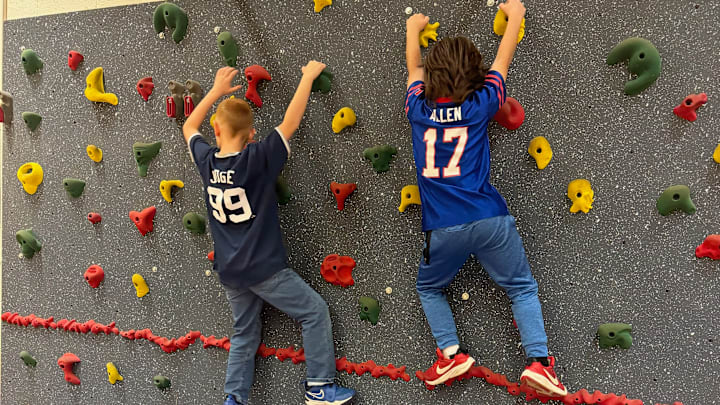Embracing Adventure in the Physical Education Curriculum in Schools

In 2023, a new study from the Journal of Adventure Education and Outdoor Learning was published and dissected the barriers and opportunities associated with incorporating climbing into physical education. The study, which took place in Austria, interviewed 14 teachers from urban and rural locations to gain a better understanding of what what it would take for climbing in schools to be plausible.
Some of the identified challenges were fear of student embarrassment due to group dynamics, the possibility of challenging students too much, and teachers who may not be willing, or able, to facilitate climbing-related lessons.
While taking into account the challenges, several teachers were able to identify the opportunities that climbing can offer in schools. One teacher who participated in the study explained that climbing is a sport where everyone of all levels can experience success. For some individuals, no matter the age, climbing two feet off the ground is a monumental achievement that should not be overlooked. A second teacher stated that climbing is a unique opportunity for students to learn how to cope with fear, which translates to other aspects of their lives.
Schools throughout the United States are honing in on these topics and have been able to outweigh the challenges with the benefits, including Ohio Street School, a New York State elementary school.
For nearly 13 years, Ohio Street School physical education teacher and coach, Rebecca Sullivan, has been implementing indoor rock climbing into her curriculum. The school invested in a traverse rock wall for their gymnasium as a way to introduce students to the elements of climbing.
Coach Sullivan's students begin using the rock wall when they are in kindergarten, and they continue to use it throughout their elementary years.
"When they're in kindergarten, they are nervous about the rock wall because they think they have to go high off the ground," Coach Sullivan stated. She explained that many children lack the ability to comfortably move left-to-right, so the traverse wall allows students to grow stronger in that area.
With fear of heights playing a large role in climbing, Coach Sullivan is there to guide her students every step of the way.
"If they [the students] are hesitant, myself or another adult is behind them. Often times, they'll get up and they will panic. I talk them through it... 'This foot goes on the yellow [hold], and this foot on the green.' They do it on their own, I just talk them through it." she stated.
The traverse wall used at the elementary school is broken up into panels. As a safety precaution, there is only one student allowed on each panel at a time. Additionally, the wall is equipped with mats on the floor for added cushion. Students are asked to avoid climbing far above the safety line, which is identified by a solid red line stretching across the entirety of the wall. As with any climber, Coach Sullivan reminds students to keep their belly buttons and hips close to the wall to encourage proper form.
"It's always nice to see a kid who is afraid of heights get on the wall and go across, even if it's two panels. We work on one panel at a time, then increase it to two," said Coach Sullivan. "When they can problem-solve and and get all the way across, they're happy about their achievement."
As schools continue investing in rock walls around the country, more students will have the opportunity to try a new sport, learn how to cope with fear and overcome challenges. These are irreplaceable skills that children can carry throughout their lives.
